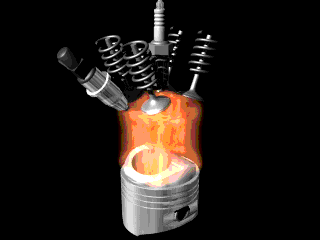

Combustion
MECH 558
Catalog Description: This course presents the concepts of chemically reacting systems (flames) along with many practical applications. Topics include chemical equilibrium, chemical kinetics, premixed laminar flames, diffusion flames and environmental issues.
Textbook: An Introduction to Combustion: Concepts and Applications, Stephen R. Turns, Second Edition, McGraw Hill, 2000.
Location and Meeting Times : MWF, 12:00 to 12:50 p.m., Academic Village C141
Instructor: Anthony J. Marchese Download Course Syllabus Here
Office: A103 H Engineering
Lab: Engines and Energy Conversion Lab
Phone: (970) 491-2328
Email: marchese@colostate.edu
-
Calculate adiabatic flame temperatures using the concepts of chemical equilibrium.
-
Predict how equilibrium composition will shift with varying pressure and temperature.
-
Derive the Arrhenius rate expression from simple kinetic theory.
-
Explain the explosion limits of the H2/O2 system using chemical kinetic arguments.
-
Explain qualitatively the chemical oxidation mechanism of alcohols, alkanes and aromatics.
-
Assemble detailed chemical kinetic mechanisms and model zero and one-dimensional chemically reacting systems using Chemkin 4.1 software.
-
Calculate premixed laminar flame speed using phenomenological arguments and perform complex laminar flame calculations using Chemkin 4.1 software.
-
Determine the burning rate of a liquid fuel droplet.
-
Explain the formation mechanisms of NOx, HC, CO and PM in combustion systems and how to design systems with low pollutant formation.
![]() Colorado State University • Fort Collins, CO 80523 • Phone
/ 970.491.2328
Colorado State University • Fort Collins, CO 80523 • Phone
/ 970.491.2328
Contact marchese@colostate.edu
with questions, problems or comments.
©2010 Anthony J. Marchese.